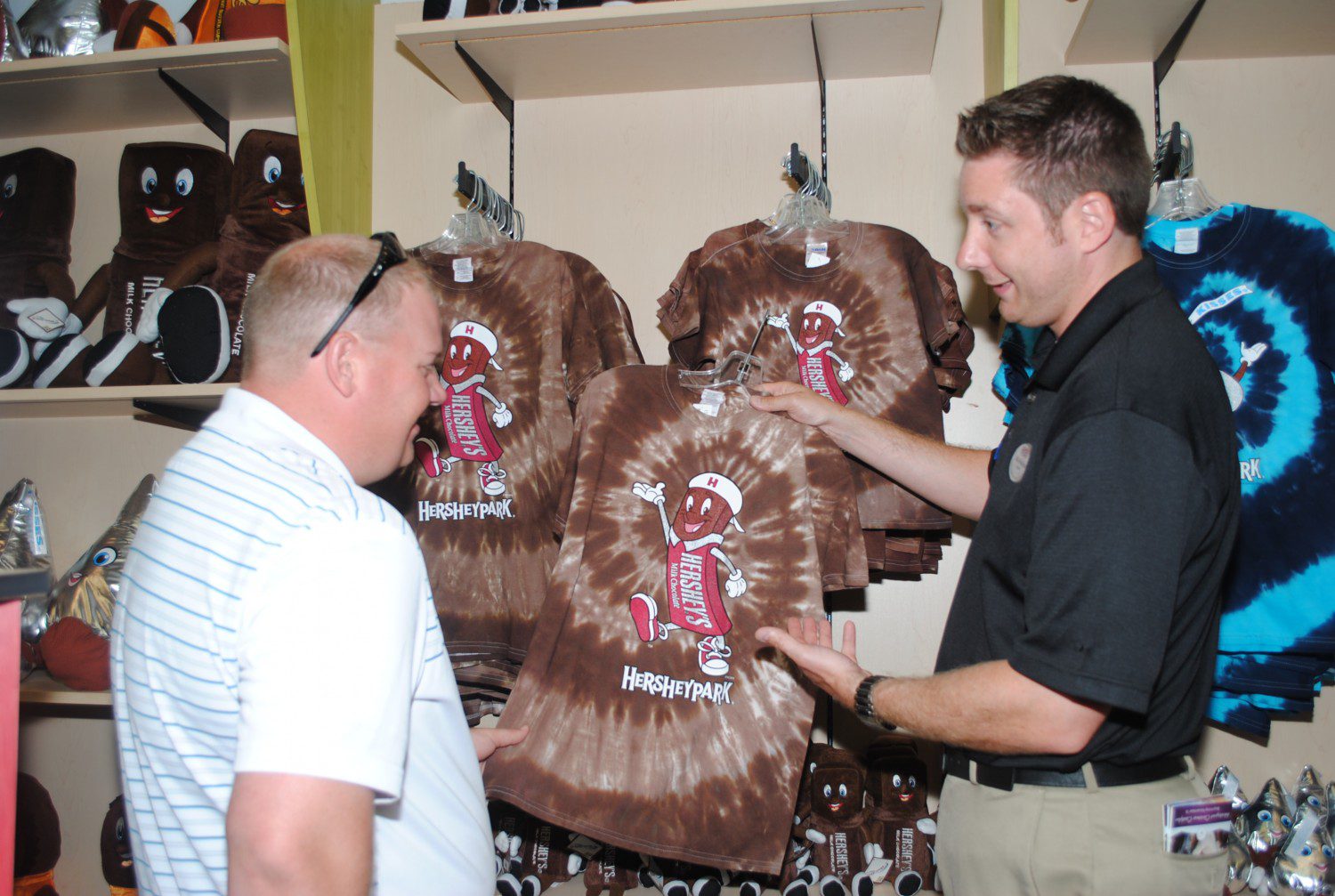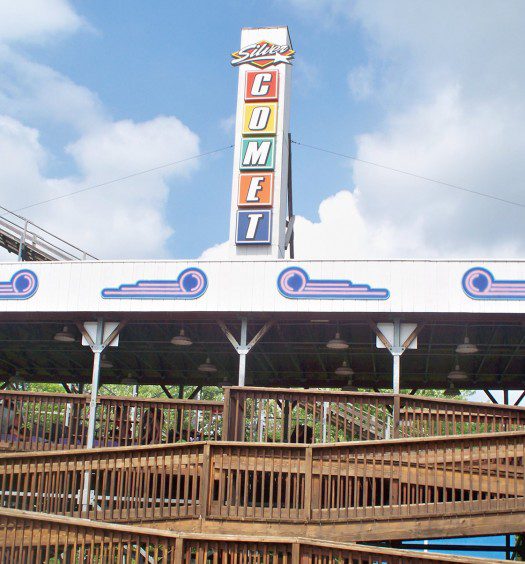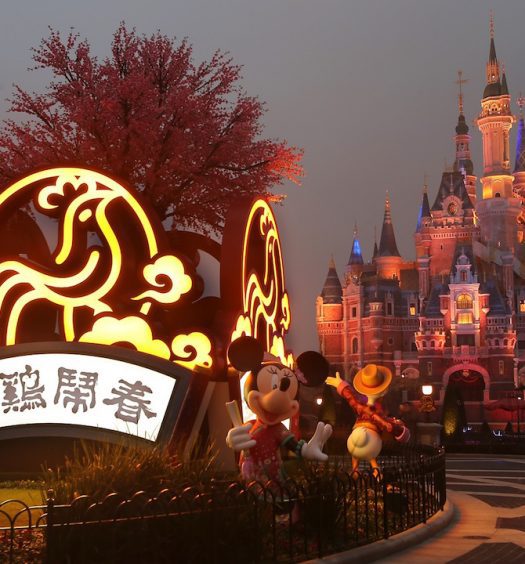After all the fun of the fair, there is always that temptation for park guests to take away a souvenir of their special day – no matter how big or small. Beth Whittaker looks at how theme parks really do provide the perfect location to engage with visitors and how the amusement industry is continuing to make the most of retail spaces.
The unique offering of an amusement park is the adrenaline rush visitors get during their time spent at the park, and it has been argued by some ‘in the know’ that guests are much more likely to make an impulse buy when they have just stepped off a thrill ride experience than they are at other times.
As with all aspects of the amusement industry, there are parks that utilise retail space really well – notably those operated by the likes of Disney, Merlin Entertainments and Universal Studios – thanks to their years of knowledge in creating magical experiences and memories and driving sales through additional retail revenue.
The key to successful retail in theme parks relates to identifying the additional opportunities to sell. This could be throughout the park, at top attractions, at events through experiential marketing or by maximising opportunities within a retail space itself.
Whether it is a dedicated gift shop at the end of a thrill ride, food and beverage outlets dotted around the park, or general stores for those last minute forgotten items, retail provides an important source of revenue for all amusement and theme parks.
At Busch Gardens in Tampa, Florida, for example, merchandise makes up a significant portion of the park’s overall revenue stream, with its retail portfolio including gift shops, midway games, photo locations, stroller and locker rentals and its concessionaires, who offer products such as caricatures and face painting.
While the financial aspect is most definitely important to the park, according to Busch Gardens’ vice president of merchandise, Kevin Lembke, the role merchandise plays in the overall guest experience is just as important.
“Shopping is one of the few experiences in the park that gives guests the opportunity to take home a tangible memory of their visit. Our goal is to create shopping experiences and products that align seamlessly with what guests are experiencing in the park. When shopping and playing games become a ‘must-do’ part of a guest’s day we know we have done our job properly.”
Busch Gardens is known for its unique and highly experiential retail environments. As a park that is consistently rated one of the world’s most beautiful theme parks, the team has to work hard to ensure its stores match that expectation.
“Each of our shops is themed after the European country it represents,” continued Lembke, “and we offer products that match the country’s heritage. Guests who visit the Emerald Isle store in our Ireland village, for example, will find products made in Ireland that they will see in few other places.
“Our guests recognise that uniqueness and often comment on how they can only find particular products at Busch Gardens. It is this authenticity that gets guests spending and keeps them coming back for more.”
UK-based Green Room is a specialist when it comes to designing and delivering brand and retail experiences. Sam Langley-Swain, Green Room’s insights manager, explained to InterPark why it is so important that amusement parks maintain good retail merchandising principles such as those outlined by Busch Gardens.
“Within each retail space good, basic merchandising principles should be applied – from arranging products in the most effective way, to excellent cleanliness. It’s also an option to sort products by price point, with the lower-value products perfect for children with pocket money situated lower down the shelves.
“It is important to have great in-store communication, including pricing and product information, the retail space should also cater for foreign tourists through good graphical iconography and signage is important to help guide customers around the store.”
As we know, it is important that theme parks and amusement parks, like all retailers and brands, consider the customer at the heart of everything they do. Knowing and understanding the target consumer is critical for creating a successful experience, as Langley-Swain explains: “Customers visiting amusement parks still expect great customer service, just like they would at any other retail destination. Having knowledgeable and passionate staff will also add to the experience and create the sense of fun that is expected within these environments.
“At Green Room we love working with a variety of clients across many sectors and we approach any store or retail design project in the same way – with our IDEA process. Firstly, we take insights from customer satisfaction surveys to market trends and then translate these into our ‘define’ stage. This is where we develop the big ideas into store concepts and define the requirements of the project.
“Following this, we develop the full concepts and designs and then apply these into the physical environment. The key aspects to consider in the amusement park retail environment are the customer’s journey – including way- finding, communication in-store, point of sale material and call to actions – and there needs to be a balance of education spaces and dwell time to allow customers to browse at their leisure.”
The amusement industry is, of course, no stranger to the retail concept, and it has been noted that today more and more high street retailers are taking inspiration from the amusements industry by creating in-store theatre and immersive retail experiences.
Referring back to Busch Gardens in the US for a second, for Lembke while there are some similarities between amusement parks and traditional retail, the amusement park sector forces us to think differently.
“One of the biggest factors is remembering that guests (in most cases) are not visiting the park specifically to shop,” he tells InterPark. “Shopping in most theme parks is a secondary priority, which puts more pressure on the retail leadership team to drive guests into the stores and compel them to buy.
“Well laid out stores with visually appealing entrance ways are a must. Our job is to give the guest a reason to enter a store, especially when we are competing for their time against rides, shows and other entertainment options.”
Lemke also explains how store set-up is just as important and that its location within the park decides upon its specific set up. At the entry and exit there should be clean, easy to shop stores that are organised by category for those guests who want to get in and out. But as guests travel further in – particularly with stores connected to major attractions – parks can focus more on boutique presentations, enhanced visual components and other elements that allow guests to browse and really become immersed in the environment, encouraging them to spend.
“In most regional and local theme parks, guests visit multiple times during the year and will quickly develop an opinion on what shops offer – or don’t offer,” said Lembke. “That is why it is so important we change our store entry displays and signage regularly. By doing so it reinforces the notion that we introduce new products throughout the year and that we more than likely have something new to show them.”
Continuing with this point, Debra Jamieson, sales director at UK POS, which has manufactured point of sale products for the past 25 years, says: “Merchandising products and ensuring that they are well displayed with clear pricing is essential, so products such as ‘shelf highlighters’ are certainly key for this job.
“Maximise space and ensure you are really making an impact. It is important to ensure that visitors are aware of all the facilities and products on offer through clear signage. Pavement signs and chalkboards are two products that can be easily updated with current offers to ensure the correct messages are being communicated to visitors – flags are also great products for driving footfall.”
For Jamieson, the importance of park visitors being kept informed and updated with current information is also paramount – such as queuing times and special events taking place on the day of their trip. As well as this, to make the most of any retail opportunities, areas in the park should be easily accessible – and as they can be quite large, she suggests products including ‘snap frames’ and ‘pavement signs’ to highlight facilities including toilets, where to eat and lost & found, are essential.
For Louise Pearson, who comes from a high street retail background and is retail manager at the UK’s Drayton Manor Theme Park, the only difference between the amusement sector and more traditional retail environments is that you don’t often get a weekly returning customer and so the merchandising has to be attractive and the products affordable – meaning when they do get customers into the shops they are motivated by the products.
“We have noticed an increase in customers buying products that are personalised and bespoke,” said Pearson. “The opportunity to buy online is going to be a huge factor for us moving forward and we are in the process of developing an online presence which will allow the purchase of our Thomas Land products through our website.”
Drayton Manor’s Thomas Land is based on the much- loved children’s television series Thomas the Tank Engine and Friends and features many character rides for children and adults alike to enjoy. The only one of its kind in Europe, it features a wide range of rides and attractions, with three more rides being introduced for 2015, and offers exclusive Thomas Land products, such as a bespoke flag, which the venue takes every opportunity to promote around all areas of the park as they are a low priced item and popular with the children.
“We also sell a lot of splash macs due to the inclement British weather,” Pearson says, “plus we have two wet rides so these are invaluable if guests want to stay dry.”
Comparing the retail sector once again with the amusement industry, Pearson continued: “Most footfall in the retail sector comes from destination shoppers, but here our customers predominantly come to the theme park to experience the rides and attractions. The demographic of our customer means we have a relatively low spend threshold and therefore have to work a lot harder to increase our revenue.
“In our Thomas Land shop there are a lot of bespoke products that are exclusive to Drayton Manor Theme Park, which is a key differentiator between us and a high street retailer.”
Along with the largest Thomas Land shop in the world, Drayton Manor has an array of shops aiming to offer something for every guest, of all ages and requirements – from a gift shop at the entrance, a surf style shop for teenagers, a toy shop for all ages and a Cartoon Network branded shop selling Ben 10 and Adventure Time products.
Positioned at various points around the park, offering different products really does help sales, as the products are relevant to those particular areas. “We also offer the chance for guests to take home their memories with 12 photo opportunities around the park,” added Pearson, “11 of which are on rides. Everyone loves a ride photo!”
Back in the US at San Diego Zoo in California, for Michelle Pierce, director of retail operations, recognising the importance of retail in overall park profitability and appropriately utilising strategic space for this purpose is of utmost importance.
“The industry competes against itself,” she told InterPark. “All of us are trying to entice the guest to visit our facility versus other available discretionary spending opportunities. To further entice the guest once they have chosen to visit, retail must stay on top of industry trends, both in food and in gift selections.”
The retail aspect is very important at San Diego Zoo for a number of reasons. Both food services and merchandising generates over a third of the revenue required to maintain zoo operations, while in relation to guest services, what the guest needs and wants is provided through retail. And then there is the ‘Mission Support’ – through efforts from front line employees communicating directly with visitors and mission supportive merchandising offerings, the retail department supports the San Diego Zoo mission and vision.
“Amusement parks are unique in that they appeal to those travelling, seeking fun and unique family experiences,” Pierce continues. “They also cater to certain age demographics depending on the type of park and so retail spaces should really cater to the established demographics.”
While the amusement park sector is well versed in giving customers what they want and providing well thought out retail experiences, there is no harm in keeping on top of current buying trends and adapting business models accordingly. For example, at San Diego Zoo, Pierce notes how guests are becoming ever more environmentally conscious and concerned about excess use of plastic and paper.
“Reducing the use of plastic bags and providing environmentally safer products has definitely been a trend,” she says. “Guests are choosing to spend discretionary dollars on experiences versus gifts, while as well as this healthy food/gluten free products are also being requested.”
Theme parks are no different to traditional retail when it comes to trends; people like quality and good value and, according to Lembke, “while we do not run sales as often as traditional retailers, we do focus on promotions and other ways to communicate value to our guests. Everyone loves a deal no matter where they shop.
“Our biggest key is ensuring the quality of the product and the experience in the store match the quality of the park. Offering guests authentic merchandise in a unique environment and capitalising on the emotional high they have from a great theme park experience, provides the recipe for a happy guest who will spend money at the park every time they visit.”
Finally, from a sales perspective there is plenty amusement and theme parks can continue to work on to get the best out of their retail areas. Clearly designed, separated sections so people are drawn to the products that stand out to them are going to make them more likely to make a purchase.
Continuing to increase the interactive element is also certainly something parks should focus on, particularly when it comes to enticing the teenage demographic – combine this with amazing and thrilling experiences and you’re on to a winning formula, as Jamieson concludes: “iPads and other touchscreen devices can engage with visitors, encouraging them to stop and potentially make a purchase of a photo or video of their day. Thinking interactive with your displays is key.”

















